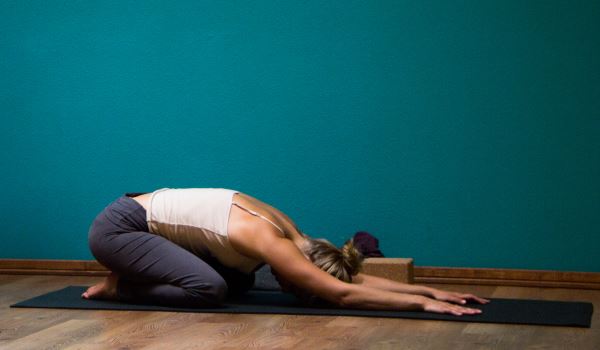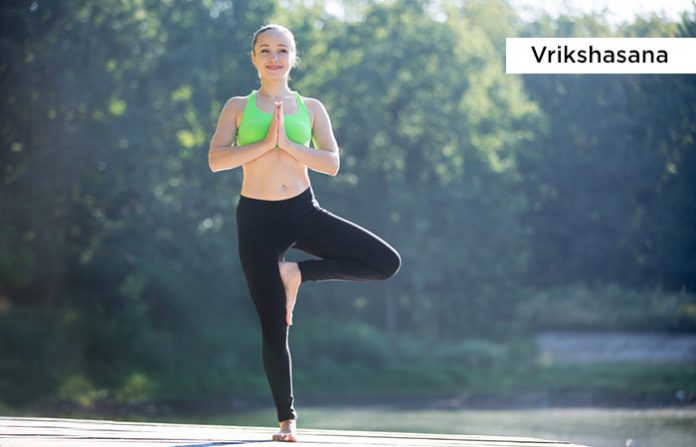Exercise prepares you for more important purposes. Wondering what this means? So, let me tell you. Weakness, pain and low endurance reduce the capacity of your body, which prevents you from reaching your full potential. Exercise opens you up and creates a way to get mental clarity and calm. Hatha Yoga is such an exercise. Here we discuss the best of its asanas. Check 6 Best Hatha Yoga Asanas And Their Benefits.
Table of Contents
What Is Hatha Yoga?
‘Ha’ means that the sun and ‘tha’ mean the moon. Hatha Yoga means balancing the sun and the moon within you. It is designed to calm your body, your mind and your mind & your craft to meditation. It is the natural branch of classical Indian yogic science that attempts to build the healthy body & mind and assist you to attain inner peace and happiness. Hatha Yoga also balances the masculine and feminine within you to deepen your awareness. Power is the necessary, and the balance between the masculine and the feminine is necessary, and Hatha Yoga is the first step towards the attainment of the cause.
The name “Hatha Yoga” appeared in the 11th century in Sanskrit text. A sage called Kapila developed the first methods of this yoga that had no spiritual ties or rituals, that made it famous among normal men. This includes the list of asanas or yoga postures that are classified into five categories: standing poses, sitting poses, resting poses, backbends and balancing poses. These poses manipulate the energy of your body and channel it in a way that will help you live the unlimited.
What Hatha Yoga does to your body?
Hatha Yoga is able to take you beyond the limits thanks to yogic postures. If you train your body to form individual poses, you can do the same to increase your awareness. It is a process where you start with your body, move on to breathing, work in the mind, and finally inhabit your inner self. Hatha Yoga purifies your body and discipline to be able to receive higher energy levels.
In the broader concept of yoga, Hatha Yoga is a physical technique that is a preparation necessary to achieve a higher goal. It is easily accessible to the common man and has been practiced by ordinary people since time immemorial, regardless of caste and religion. The yoga diet involves a good intake of nutritious food and breathes well apart from a routine practice of asanas.
The natural postures of Hatha Yoga, in special, have become very familiar from the 20th century & spread across India & abroad. Let us take a look at some of them now.
Hatha Yoga Asanas
- Vrikshasana (Tree Pose)
- Tadasana (Mountain Pose)
- Adho Mukha Svanasana (Downward-Facing Dog Pose)
- Baddha Konasana (Cobbler Pose)
- Paschimottanasana (Seated Forward Bend Pose)
- Balasana (Child Pose)
1. Vrikshasana (Tree Pose)
Vrikshasana or Tree Pose derives its name because of its similarity with the tree, which represents its calm and stable nature. The Tree Pose is one of the few asanas of Hatha Yoga that requires you to keep your eyes open during laying to maintain balance. This is a beginner level that you must practice in the morning under an empty belly when you are not affected by external forces. Hold for at least one minute.
Benefits: Vrikshasana supports your legs & brings balance to the body. It extends the ligaments and cords of the feet. It further tones your buttocks and strengthens your hip bones. This pose creates your self-confidence and esteem, improves your concentration and lets you rejuvenate.
 2. Tadasana (Mountain Pose)
2. Tadasana (Mountain Pose)
Tadasana or mountain laying is the mother of all asanas as it forms the basis for any asana. You can practice Tadasana at any time of the day. But, if you specify it or follow it with other asanas, make sure your stomach is empty. This is a basic level Hatha Yoga asana. Hold for 10 to 20 seconds to get the best results.
Benefits: Tadasana strengthens your knees, ankles, and thighs. It stabilizes your breath and improves posture. It induces energy in your feet and legs, improves blood circulation and eliminates the tension of the body. It eliminates depression and keeps you refreshed. It also improves your lung capacity and keeps your energy.
3. Adho Mukha Svanasana (Downward Facing Dog Pose)
Adho Mukha Svanasana or laying down dog looks like a dog when he leans. It is a simple and easy pose that a beginner can easily do, which will motivate him to learn the rest. Practice asana on an empty stomach and clean the intestines in the morning, as this works best then. Once you enter the pose, try to hold it for 1 to 3 minutes.
Benefits: Adho Mukha Svanasana lengthens your spine and tones your muscles. It increases blood circulation in your brain and calms the mind. It relieves a headache, insomnia, and fatigue and reduces anxiety and depression. The pose strengthens and tones the arms and legs.
4. Baddha Konasana (Cobbler Pose)
Baddha Konasana or the Cobbler Pose is an asana who resembles a cobbler at work when assumed. It is also known as Butterfly Pose as it looks like a butterfly flapping its wings. Practice asana either in the morning or in the evening under an empty belly. In the evening, make sure to practice 3-4 hours after a meal. The Cobbler Pose is a low-level Hatha Yoga pose, and you have to hold it for 1 to 5 minutes once you assume it.
Benefits: The Cobbler’s pose stimulates your heart, your bladder, your kidneys and your abdominal organs and improves blood circulation. It stretches the inner thighs and knees and relieves fatigue. It soothes menstrual pain, facilitates childbirth and relieves the symptoms of menopause.
5. Paschimottanasana (Seated Forward Bend Pose)
Paschimottanasana or the Forward Bend Pose Pose is a classic Hatha Yoga stretching pose that focuses on the back of your body. It is also called the intense dorsal extension. Lay down in the morning on an empty stomach. If you practice it in the evening, make sure that you have had your meal there about 3 to 4 hours. After the pose, try to hold it for 30 to 60 seconds.
Benefits: The front seat Bend Pose is a good stress relief. It reduces fat in your abdomen, tones your shoulders and stretches your hips. This calms you down and reduces anger and irritability. This improves your flexibility and can increase the height. Laying regulates blood pressure and improves kidney function.
6. Balasana (Child Pose)
Balasana or Child pose resembles a child in fetal position. It is a relaxing pose that precedes or follows difficult poses. This is among the first poses taught to beginners. You can practice Balasana at any time and anywhere but make sure your stomach is empty when you do it, or there is a 3-4 hour gap from your last meal. After the pose, hold for 1 to 3 minutes.
Benefits: Balasana releases tension in the back and shoulders. It keeps your internal organs supple and stretches your thighs and ankles. This improves your breathing and calms your mind and body. It calms your nervous system and relieves constipation. The pose relaxes your back.

